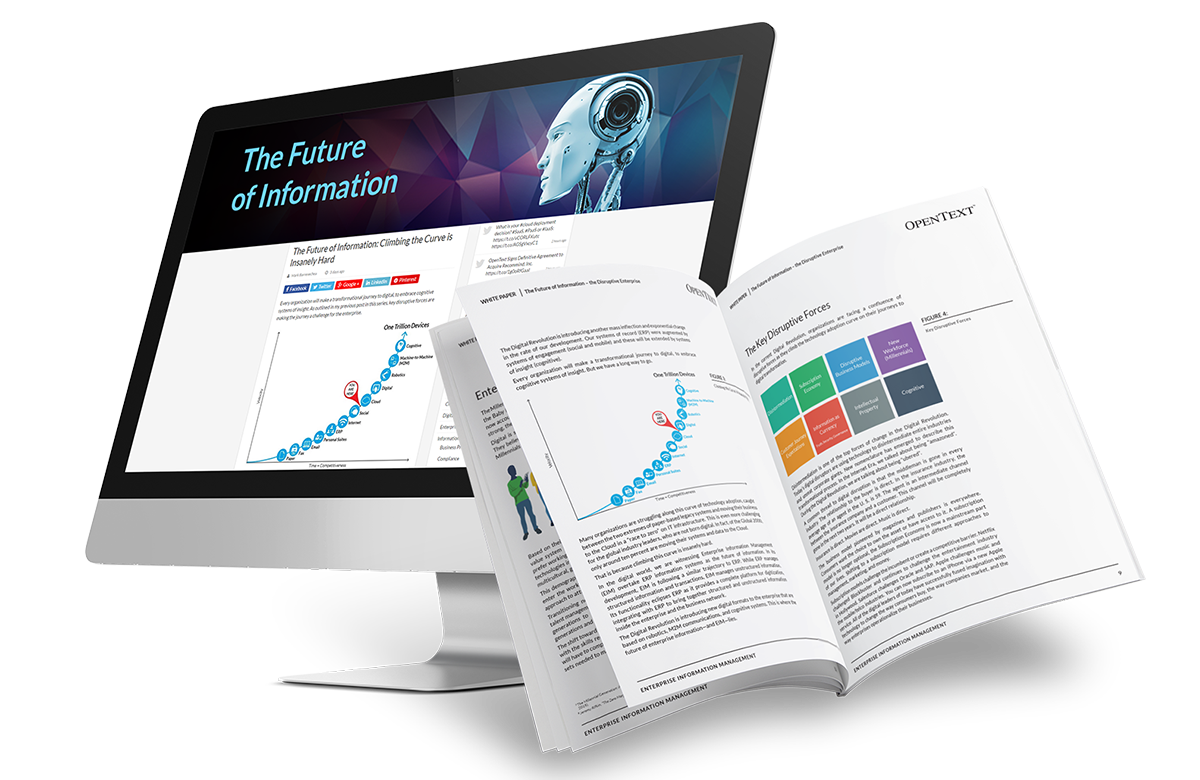
Disruptive technologies like mobility, the Cloud, the IoT, and cognitive systems are accelerating the pace of change in a Digital Revolution.
If we examine this pace of change in a larger historical context—one that looks back to our origins and the advances we’ve made over time—the implications on business (and society) are radical, onerous, and filled with potential.
Going right back to the beginning, the first human species appeared on the planet from 150,000 to 200,000 years ago. It took us equally as long to progress to using movable type with the invention of Gutenberg’s printing press, and to start sharing knowledge and information.
The printing press prefaced another significant era of human invention. A couple of hundred years following its invention, we embarked on the Industrial Revolution with the invention of the steam engine. Through automation, the pace of innovation increased.
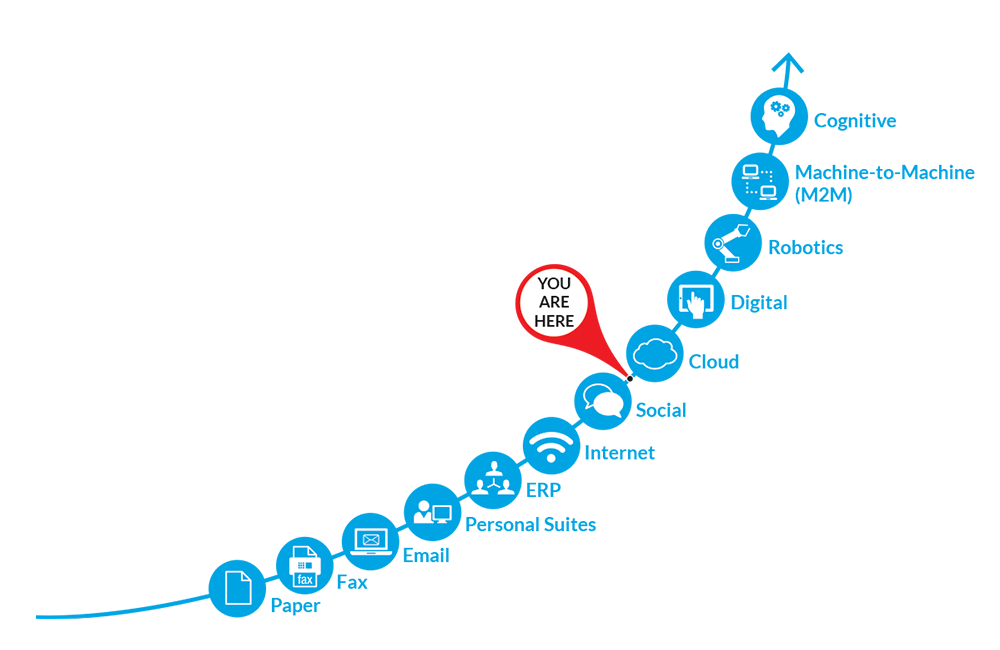
The Digital Revolution is heralding the next great shift in the history of technology: the Cognitive Era Based on the accelerated pace of technological change that we’re experiencing today, the changes to come will deepen the relationship between humans and machines.
According to the Association of Computing Machinery (ACM), whose founding member was Alan Turing, there are three significant eras in the history of computer technology The first era, the Tabulating Era, took place post 1900s and describes the early use of mechanical systems to tabulate calculations The second era, the Programming Era, emerged in 1960 when scientists created computers that were dependent on the programming of processes or rules Which brings us to our immediate future (perhaps as near as 2020) with the emergence of the Cognitive Era and the development of cognitive systems During the Cognitive Era, computers will mature into learning systems They will be able to understand data—or analyze, adapt, and suggest solutions based on data.

The Millennials are one of the biggest disruptors of the enterprise. They have usurped the Baby Boomers and GenXers as the largest demographic in the workplace and now account for over 25 percent of the world’s population. And, at almost 2 billion strong, they are a force to be reckoned with.
Digital is second nature to Millennials and plays a significant part in their lives. They believe new technology makes life easier and brings people closer together. Millennials are mobile. They are hyper-connected and always on.
Based on their love of all things digital, Millennials are introducing a whole new value system to the workplace. They eschew traditional hierarchical structures, prefer working in ways that are open, flexible and social, and are introducing new digital technologies into the enterprise, even if it means circumventing IT policy. They are multicultural, global, and believe in a work-life balance.

This is a very exciting time to be part of the global economy. We’re in the midst of a Digital Revolution. The advances and their impacts are comparable to those made in previous industrial revolutions. Like those in the past, this revolution is technologyled and based on automation and connectivity. From innovations in mechanization in the early 18th century to mass production in the late 19th century and ensuing developments in computing, two forces are causing massive change, and they are extreme automation and extreme connectivity.
Extreme automation describes an increasing reliance on robotics and Artificial Intelligence (AI) in all aspects of our lives. It includes disruptive technologies like three-dimensional (3-D) printing, the Internet of Things (IoT), machine-to-machine (M2M) communications (like sensors), and cognitive systems.
Extreme connectivity happens when all of these systems interact and communicate with each other and people in real time. It is 4 billion users connecting with 1 trillion devices across fifth generation (5G) wireless networks.
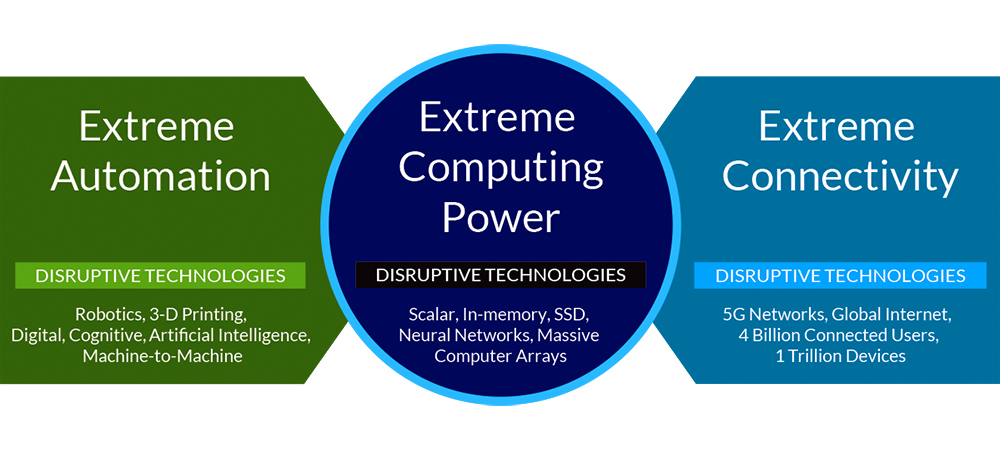
As the Millennials enter the workforce, the machines will follow. And so cometh the machine. We’ve explored the relationship between digital technologies and success factors, including increases in revenue and output, even in terms of economic impact and GDP.
The Internet is constantly evolving. The Internet of Things (IoT) has been identified as the next phase in the evolution of the Internet. The IoT is more than simply a technology trend, it will transform the world as we know it, creating a giant, global network of devices and machines that are connected, communicating, and exchanging information. This market will see 50 billion devices connected by 2020 and a value of $14.4 trillion.11 Its potential impact on every industry is huge.
The rapid growth of the IoT is being driven by low-cost sensors and beacons, cloud computing, analytics, and mobility. The IoT automatically exchanges information over a network without requiring human-to-human or human-to-computer interaction. Instead, data exchange is based on machine-to-machine communications.
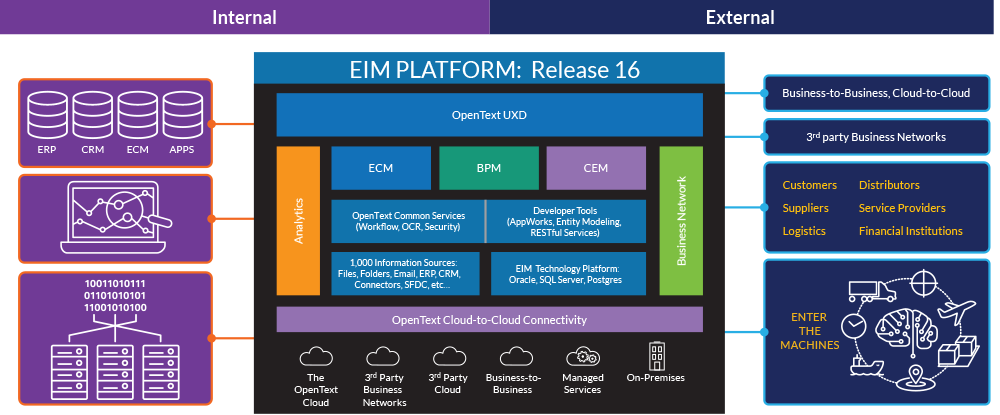
OpenText Release 16 is the world’s first digital platform. It is composed of two major product components: OpenText Suite 16 and OpenText Cloud 16. Each is made up of tightly coordinated releases across all key OpenText product suites, representing the next generation of Enterprise Information Management (EIM).
EIM arms organizations with the tools and technologies they need to digitalize their operations—across any device in the Cloud, on-premises, or using a hybrid model. By providing the world’s best integrated EIM platform and applications, these new offerings ensure that global organizations are able to digitally transform their operations, processes, and information to better service and interact with their customers, suppliers, and partners, and create better ways to work.
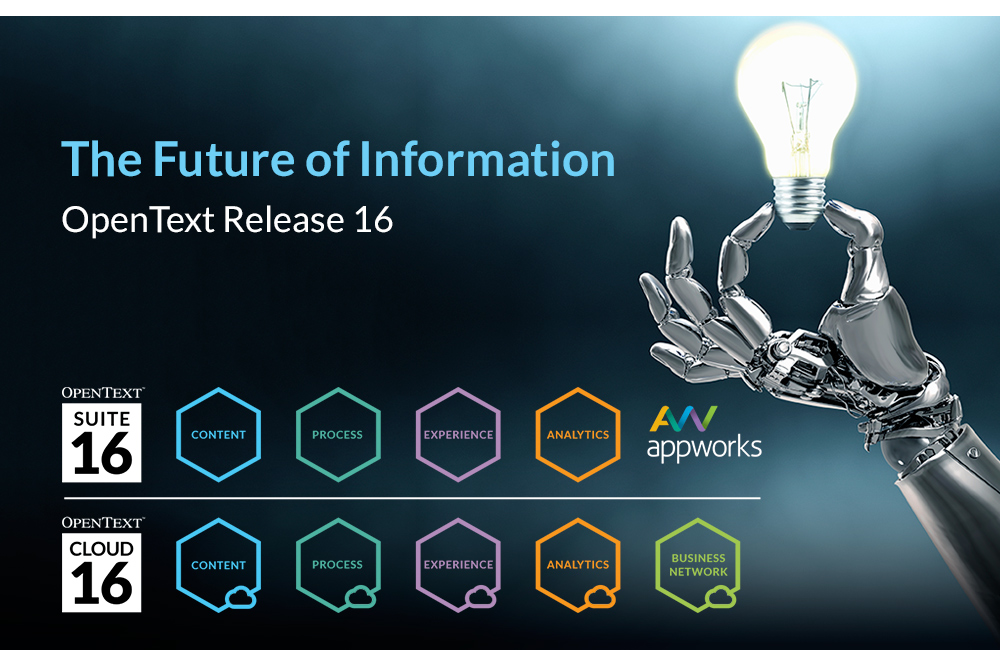
OpenText Release 16 applied cognitive capabilities to provide customers with deeper levels of insight and understanding into their enterprise information. And using analytics technologies, moving them beyond predictive analytics into the Cognitive Era with prescriptive analytics like semantics and reasoning analysis.
OpenText designed EIM platform to be more cognitive, and have smart meters embedded into Business Network, supporting machine-to-machine communications across millions of transactions every month. First responders in the healthcare industry are capturing real-time videos and uploading this into content server repository. In engineering and construction, also working with companies that are deploying drones at construction sites for greater reach, portability, and capabilities. They’re capturing video and telemetry data which is then being stored in an EIM system. In OpenText Release 16, the machines are waking up, and they’re talking to each other. As illustrated in the following applications, when analytics are applied to unstructured information in a secure EIM repository, the information becomes much more valuable and insightful—or cognitive.
